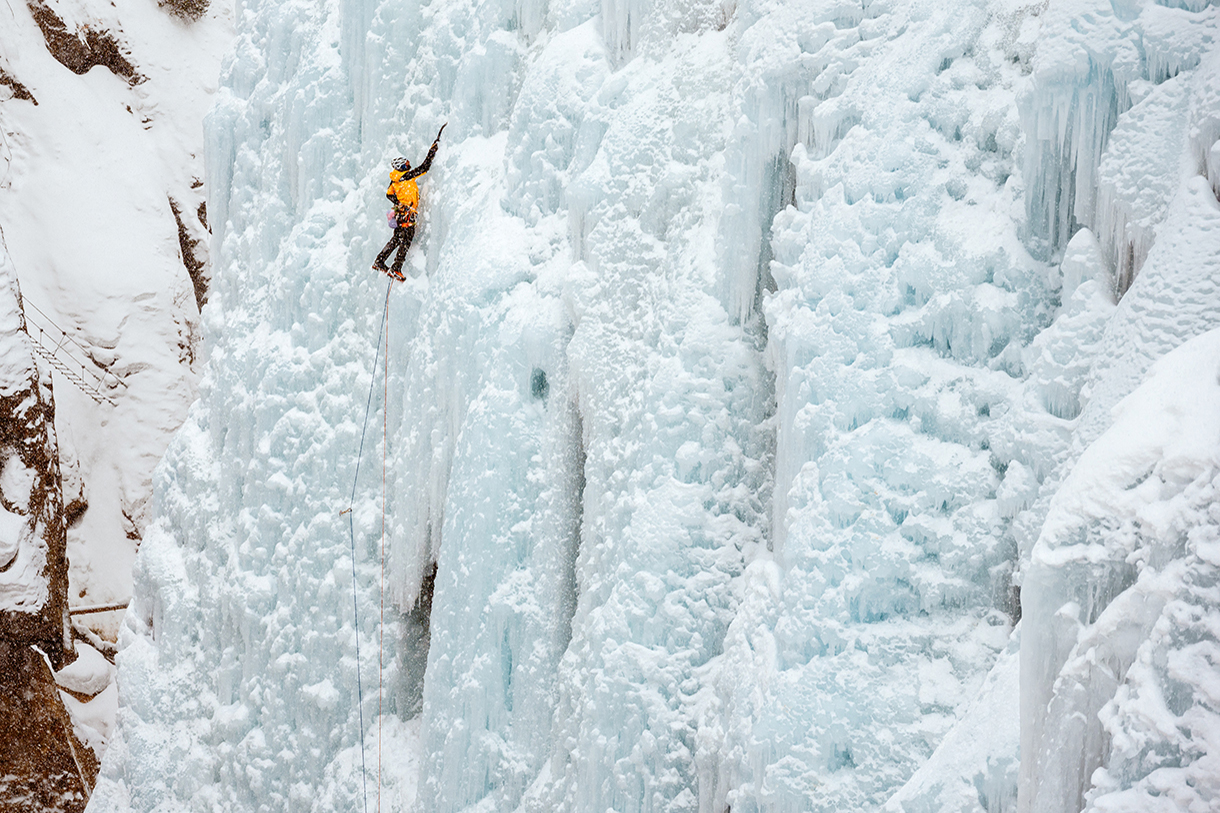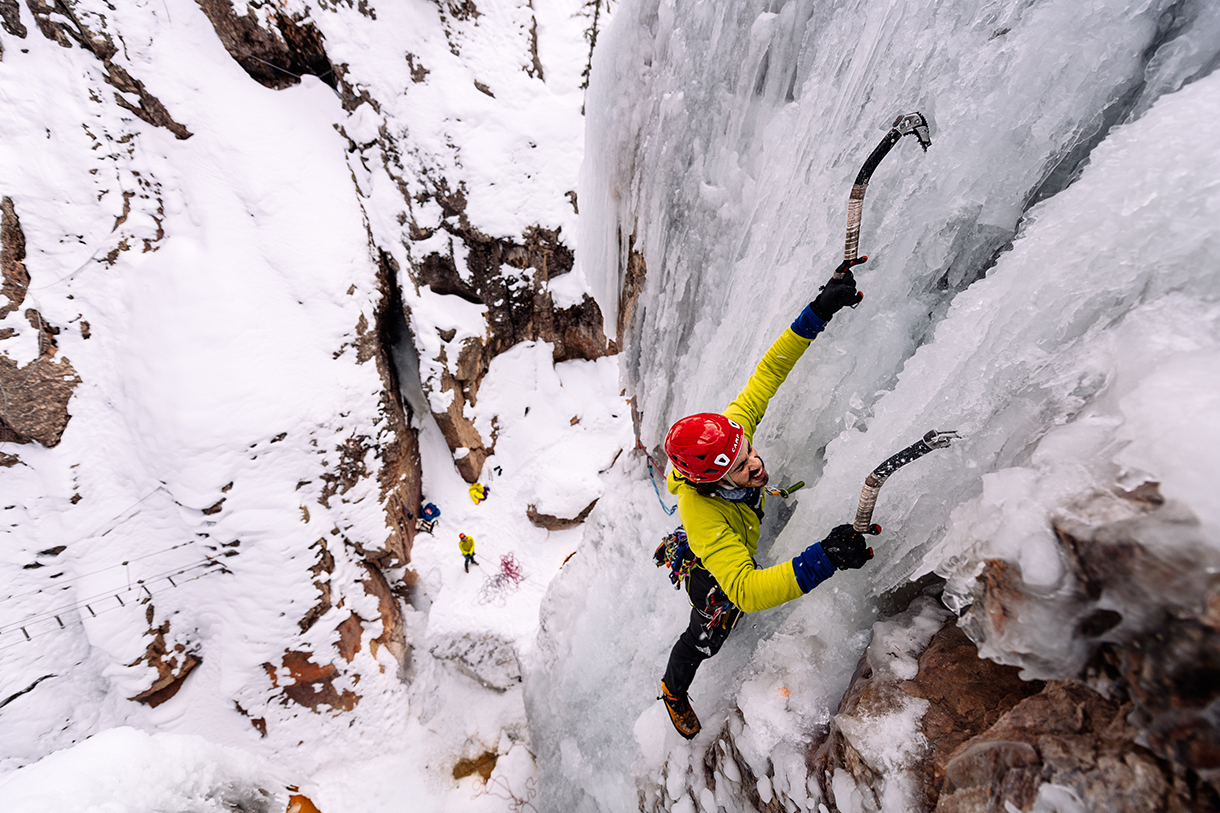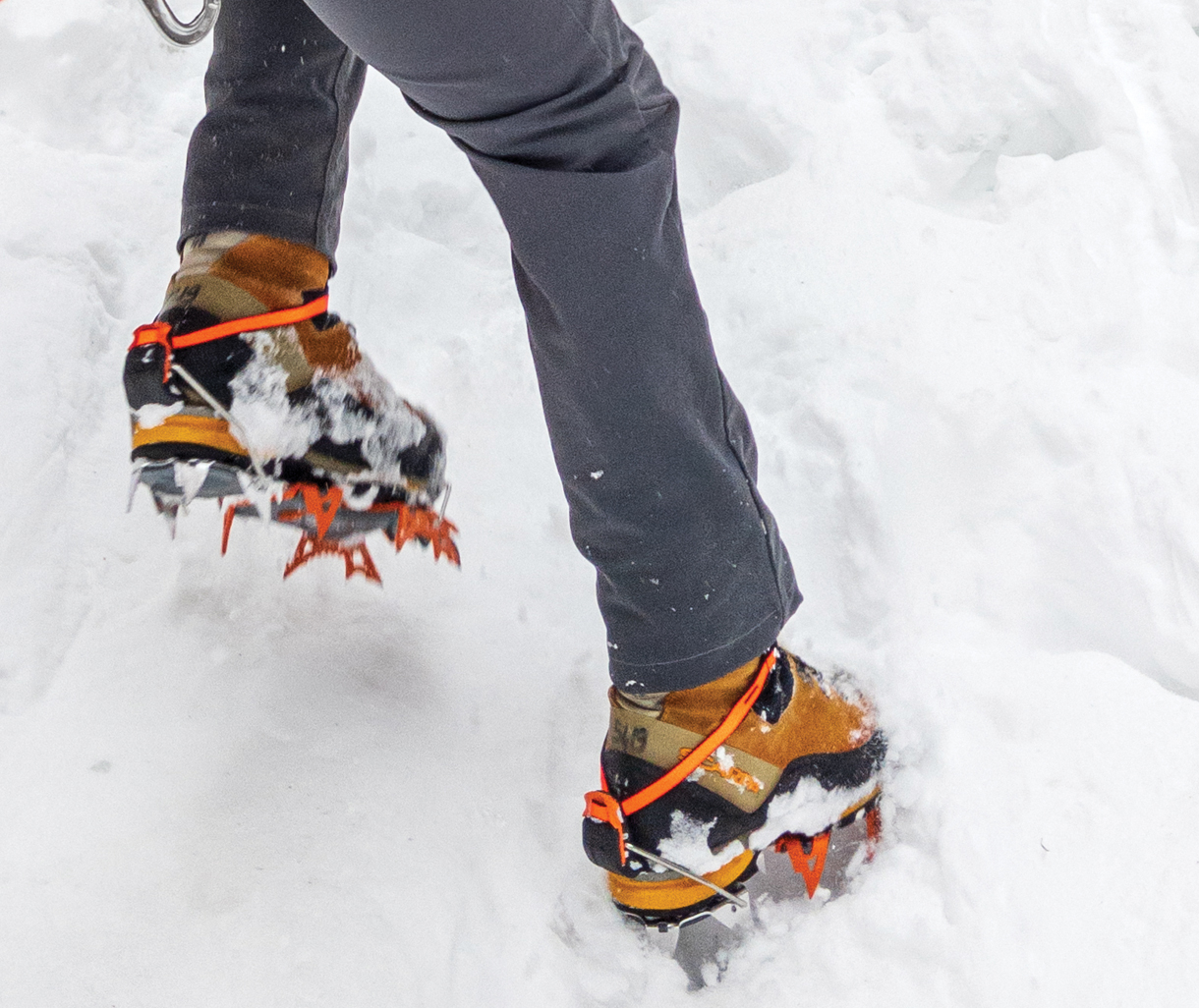
Up the Ante
When temperatures drop, ice climbers both novice and expert descend on Colorado’s Ouray Ice Park—the United States’ premier ice climbing destination never disappoints.
Wintertime lures Ouray’s other set of visitors. The transition may not be obvious walking down Main Street, but you’ll see telltale signs; the first being that the cars are all parked along the curb, right against the plowed banks of snow. Instead of high-clearance Jeeps, you see lifted Tacomas with camper shells. The Subaru Outbacks have dispersed, replaced by generic crossover SUVs. The family minivans have been driven home and the built-out Sprinters driven in. The occupants of these numerous vehicles compromise a spirited yet subtle crowd who have come to Ouray for one reason: to climb the ice.
The sport is as masochistic as it sounds; you finish cold, wet, exhausted, and spared potential hazards that surpass those of rock climbing. There is always the danger of being pummeled by hanging chandeliers of ice that can break off. Sometimes entire curtains of ice delaminate from the bedrock they’re bonded to—with climbers still attached.
And yet, ice climbing is a ton of fun. Renowned alpinist, the late Alex Lowe, named his pinnacle first ascent “The Winter Dance.” Practitioners utilize specialized equipment—carrying technical ice tools in their hands and wearing mountaineering boots with crampons on their feet—to ascend vertical floes of frozen water. The movement is rhythmic and graceful with undertones of urgency, thrill, and novelty. Conducive conditions in the United States last at most two or three months and vary annually based on precipitation and temperature changes.

Colloquially known as the “Switzerland of America,” Ouray lives up to its nickname by having a seat among the impossibly steep geographical relief of the San Juan Mountains. Here is arguably the best—and most accessible—waterfall ice climbing in the United States, consistent from around mid-December through the end of February. In January the annual Ouray Ice Festival and ice climbing competition is held at the Ouray Ice Park (ourayicepark.com)—a mile-long canyon with hundreds of climbing routes that’s just a 10-minute walk from town.
Inclusive of the treacherous realities, ice climbing can be experienced independently with the right skills and equipment, but initially climbers should hire a guide service to provide climbing instruction and mitigate risk. The expert and personable staff at Peak Guides (peakguides.com) can be found on Main Street in Ouray, a few minutes from the ice park. Booking an instructional weekend jaunt into the park provides an ample introduction to the equipment, movement, and ice conditions—essentially, Ice Climbing 101. Most people catch on fairly quickly, and after meeting some prerequisites, can graduate to more exciting potential adventures, such as multi-pitch ice climbing in the backcountry.
There’s much that makes Ouray Ice Park incredibly unique. Most notably, it’s a free-to-access public park, maintained and operated by the nonprofit organization Ouray Ice Park, Inc. Memberships and donations allow access to remain free and for operations to continue, but ultimately, when you walk into the facility there’s no ticket booth, no turnstile, and no wristbands. It exists as a public resource.

Deep South and South Park are the most remote sections and require the longest walk to reach. They’re about 20 minutes from the entrance, but offer a diverse array of routes, short to long, easy to difficult, in an incredibly scenic arena. New Funtier is closer to the entrance, featuring climbing routes in the more tightly constricted section of the canyon. School Room, as its name implies, is a great place to learn; it’s relatively close to the entrance and features routes of moderate difficulty. Near the upper bridge is Pic O’ the Vic and the Lead Area, which are home to the park’s longest, steepest, and most difficult routes. These are spectacular, albeit difficult climbs, definitely worth working up to. Their proximity to the road and bridge also allows for clear spectator positions.

Once you’ve cut your teeth in the ice park, you can venture out with a climbed with ice tools and crampons). The Scottish Gullies is home to the competition wall—a unique feature that enables challenging, custom-set routes that measure the mettle of even the best climbers in the world. Finally, the Five Fingers area houses steep, long, guide into the backcountry. Climbing inside the park offers a somewhat controlled environment that’s ideal for learning, while backcountry ice is wild and naturally formed—and there are routes that go on for hundreds of feet.
Dexter Creek Slabs can be an appropriate introduction to moderate difficulty, multi-pitch, backcountry ice. Charmin’ Tube and Horsetail Falls are a bit more difficult and longer, with the payoff being rock features that place climbers in truly incredible positions. For more advanced climbers, Bridal Veil Falls in nearby Telluride and Whorehouse Hoses and Stairway to Heaven, both positioned outside of nearby Silverton, offer the ultimate adventure so long as both you and the ice are in optimal condition.




